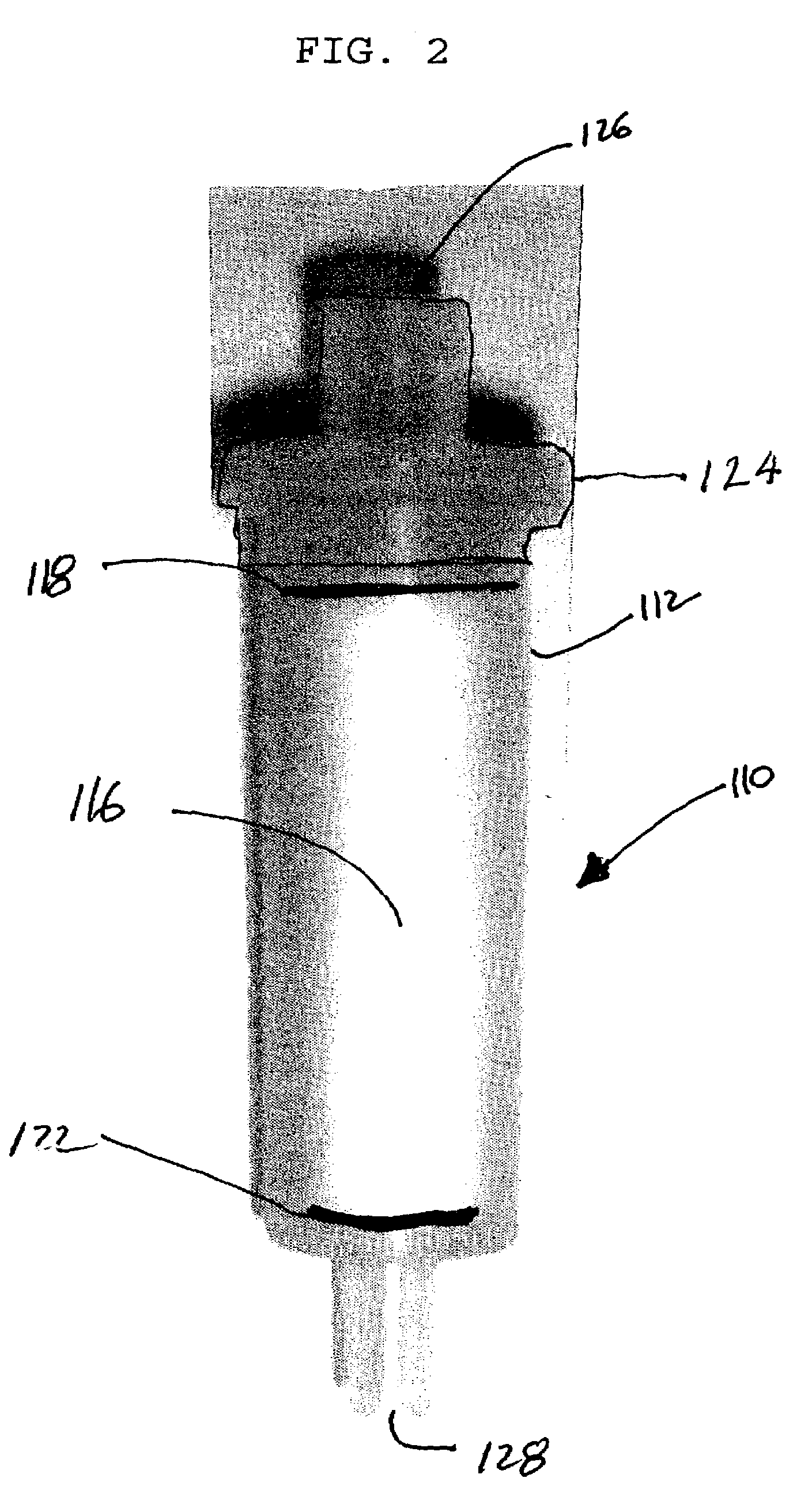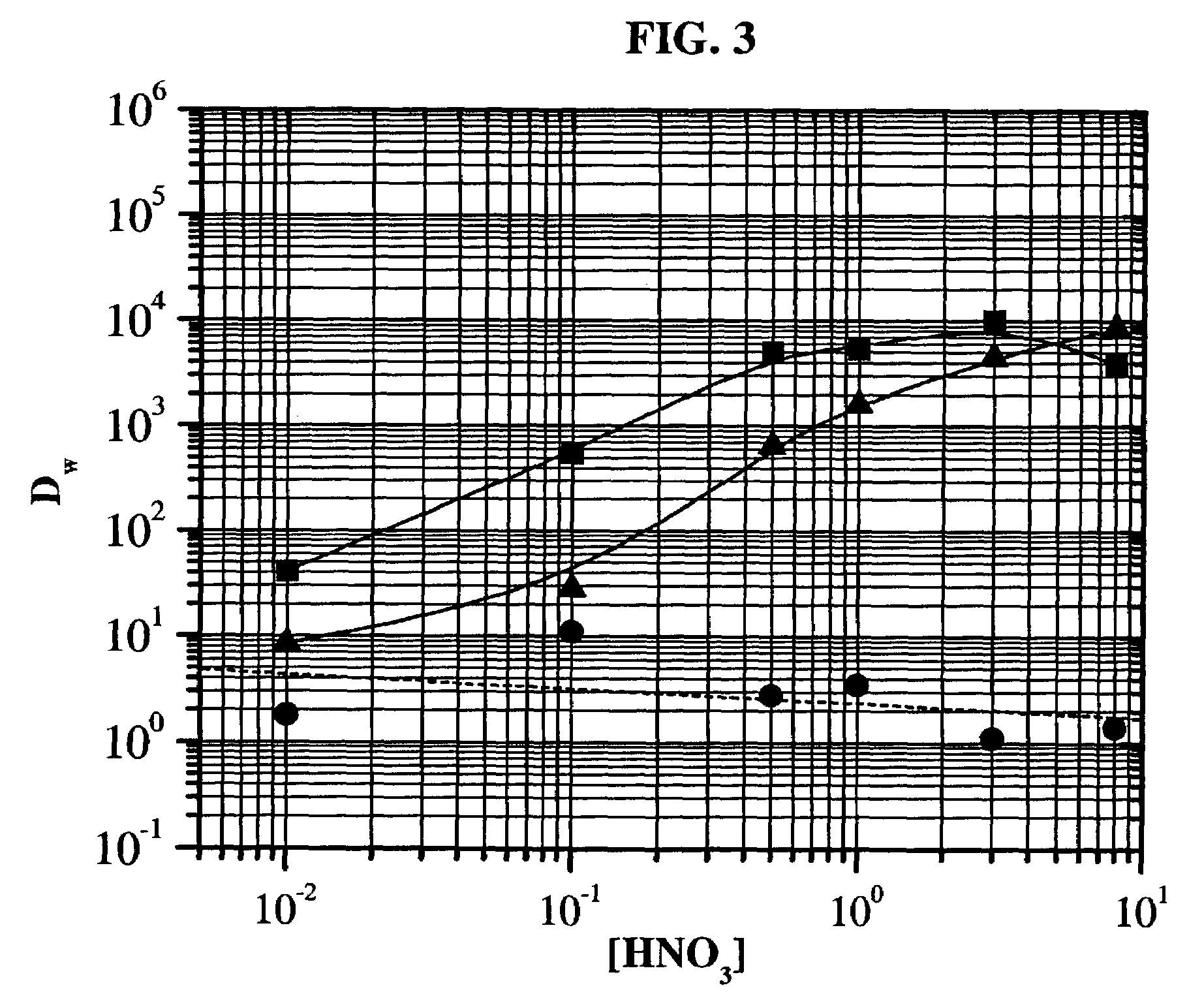Multivalent metal ion extraction using diglycolamide-coated particles
a diglycolamide coating and multivalent metal technology, applied in the direction of magnesium compounds, water/sewage treatment by ion exchange, nuclear engineering, etc., can solve the problems of limited amount of strontium cation-extracting crown ether present on any given support, inefficient supported crown ethers, and reduced usefulness for subsequent separation
- Summary
- Abstract
- Description
- Claims
- Application Information
AI Technical Summary
Benefits of technology
Problems solved by technology
Method used
Image
Examples
example 1
Synthesis of N,N,N′,N′-Tetra-n-octyl-diglycolamide (TO-DGA)
[0086]The synthesis of the TO-DGA is comparatively straightforward using commercially available reactants, requiring only 1–2 reaction steps, and easy purification by an extractive process. The overall synthesis and purification can be accomplished in less than six person-hours with about a 90% overall yield. An illustrative, not yet optimized synthesis procedure for the production of 60 grams of the TO-DGA is detailed below.
[0087]All chemicals were purchased from Aldrich Chemical Co., Milwaukee, Wis., and were used as received, except for the triethylamine that was freshly distilled from calcium hydride before use. All glassware was oven-dried prior to use and the reaction was carried out at ambient temperature. A positive pressure inert atmosphere of nitrogen was maintained with a latex balloon and the reaction mixture was stirred magnetically. Reactions on a larger scale require mechanical stirring because of the large am...
example 2
Preparation of Yttrium (TO-DGA) Resin
[0095]The separation medium used herein containing TO-DGA was prepared using a general procedure described previously for another separation medium [Horwitz et al., Anal. Chem. 1991, 63, 522–525]. A portion of TO-DGA (4.0 g) was dissolved in about 30 mL of CH3OH and combined with 50–100 μm Amberchrom®-CG71 particles (6.0 g) in about 20 mL of CH3OH. The mixture was rotated at about 50° C. on a rotary evaporator for about 30 minutes, after which the CH3OH was vacuum distilled. After the bulk CH3OH had been distilled, the free flowing resin was rotated under full vacuum at about 40–50° C. for another 30 minutes to remove residual CH3OH. The resulting solid is referred to as Yttrium Resin and corresponds to 40% (w / w) loading of TO-DGA on 50–100 μm Amberchrom®-CG71 particles.
example 3
Extraction Studies with Yttrium Resin
[0096]The TO-DGA molecules behave as neutral extractants; that is, solute loading occurs at high acid (e.g., nitric (HNO3) or hydrochloric (HCl) acids) or salt concentrations (e.g., lithium nitrate (LiNO3), lithium chloride (LiCl) or aluminum nitrate [Al(NO3)3] and stripping is accomplished using dilute acid or salt solutions. One particularly noteworthy characteristic of the TO-DGA resin, shown below, is the high uptake of polyvalent cations from 0.1–5 molar HNO3 and the efficient stripping of these same cations using dilute (about 0.5 M or less) HCl. The elution behavior of several tri-, tetra-, and hexavalent cations on the separation medium prepared (chromatographic material) using N,N,N′,N′-tetra-n-octyl diglycolamide (TO-DGA) extractant described before are shown below in Table 2.
[0097]
TABLE 2Elution Behavior of Selected Cationson TO-DGA Resin*Percent of TotalFractionBed VolumeAl(III)Y(III)Th(IV)U(VI)Load(0.5 M HNO3)2.066000Rinse2.0280075(0...
PUM
| Property | Measurement | Unit |
|---|---|---|
| density | aaaaa | aaaaa |
| ionic radii | aaaaa | aaaaa |
| diameters | aaaaa | aaaaa |
Abstract
Description
Claims
Application Information
 Login to View More
Login to View More - R&D
- Intellectual Property
- Life Sciences
- Materials
- Tech Scout
- Unparalleled Data Quality
- Higher Quality Content
- 60% Fewer Hallucinations
Browse by: Latest US Patents, China's latest patents, Technical Efficacy Thesaurus, Application Domain, Technology Topic, Popular Technical Reports.
© 2025 PatSnap. All rights reserved.Legal|Privacy policy|Modern Slavery Act Transparency Statement|Sitemap|About US| Contact US: help@patsnap.com



